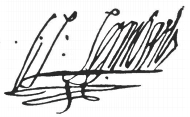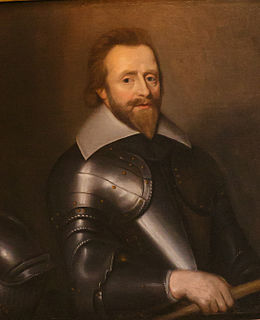Related Research Articles

County Cavan is a county in Ireland. It is in the province of Ulster and is part of the Border Region. It is named after the town of Cavan and is based on the historic Gaelic territory of East Breffny (Bréifne). Cavan County Council is the local authority for the county,which had a population of 76,176 at the 2016 census.

Earl of Scarbrough is a title in the Peerage of England. It was created in 1690 for Richard Lumley,2nd Viscount Lumley. He is best remembered as one of the Immortal Seven who invited William of Orange to invade England and depose his father-in-law James II. Lumley had already been created Baron Lumley,of Lumley Castle in the County of Durham,in 1681,and Viscount Lumley,of Lumley Castle in the County of Durham,in 1689. These titles are also in the Peerage of England. The title of Viscount Lumley,of Waterford,was created in the Peerage of Ireland in 1628 for his grandfather Sir Richard Lumley,who later fought as a Royalist in the Civil War.

Colonel Edward James Saunderson was an Anglo-Irish landowner and prominent Irish unionist politician. He led the Irish Unionist Alliance between 1891 and 1906.

Ballyconnell is a town in County Cavan,Ireland. It is situated on the N87 national secondary road at the junction of four townlands:Annagh,Cullyleenan,Doon (Tomregan) and Derryginny in the parish of Tomregan,Barony of Tullyhaw.
Cavan was a parliamentary constituency in Ireland,which from 1801 to 1885 returned two Members of Parliament (MPs) to the House of Commons of the United Kingdom of Great Britain and Ireland.

Henry Lyle Mulholland,2nd Baron Dunleath,was an Irish Conservative Member of Parliament.

Castle Saunderson is a castle near Belturbet in County Cavan,Ireland. It was the former family seat of the Saunderson family,and is now in ruins. The Finn River flows along the north-eastern edge of the Castle Saunderson Demesne,where the river enters a narrow channel of Upper Lough Erne. The castle is about a half a mile west from Wattlebridge,a small hamlet in the south-south-east of County Fermanagh.

Lord Archibald Hamilton of Riccarton and Pardovan was a British officer of the Royal Navy,and Whig politician who sat in the House of Commons between 1708 and 1747. In the 1690s,he was active in the English Channel pursuing French privateers,including Tyger out of St Malo. He commanded the third-rate HMS Boyne at the Battle of Vigo Bay in October 1702 and then commanded the third-rate HMS Eagle at the Battle of Málaga in August 1704 during the War of the Spanish Succession. He was a controversial Governor of Jamaica. He then joined the Board of Admiralty,ultimately serving as Senior Naval Lord.

Oliver Lambart,1st Lord Lambart,Baron of Cavan was a military commander and an MP in the Irish House of Commons. He was Governor of Connaught in 1601. He was invested as a Privy Counsellor (Ireland) in 1603. He was also an English MP,for Southampton 1597. He is buried in Westminster Abbey.

John Young,1st Baron Lisgar was a British diplomat and politician. He served as Governor General of Canada (1869–72),Governor of New South Wales (1861–67) and as Chief Secretary for Ireland (1853–55). From 1848 to 1870 he was known as Sir John Young,2nd Baronet.
The High Sheriff of Cavan was the British Crown's judicial representative in County Cavan,Ireland from the 16th century until 1922,when the office was abolished in the new Free State and replaced by the office of Cavan County Sheriff. The sheriff had judicial,electoral,ceremonial and administrative functions and executed High Court Writs. In 1908,an Order in Council made the Lord-Lieutenant the Sovereign's prime representative in a county and reduced the High Sheriff's precedence. However the sheriff retained his responsibilities for the preservation of law and order in the county. The usual procedure for appointing the sheriff from 1660 onwards was that three persons were nominated at the beginning of each year from the county and the Lord Lieutenant then appointed one of the nominees as his choice of High Sheriff for the remainder of the year. Often the other nominees were appointed as under-sheriffs. Sometimes a sheriff did not fulfil his entire term through death or other event and another sheriff was then appointed for the remainder of the year. The dates given hereunder are the dates of appointment. All addresses are in County Cavan unless stated otherwise.
The High Sheriff of Meath was the British Crown's judicial representative in County Meath,Ireland,from the conquest until 1922,when the office was abolished in the new Free State and replaced by the office of Meath County Sheriff.
The High Sheriff of Longford was the British Crown's judicial representative in County Longford,Ireland from the 16th century until 1922,when the office was abolished in the new Free State and replaced by the office of Longford County Sheriff. The sheriff had judicial,electoral,ceremonial and administrative functions and executed High Court Writs. In 1908,an Order in Council made the Lord-Lieutenant the Sovereign's prime representative in a county and reduced the High Sheriff's precedence. However the sheriff retained his responsibilities for the preservation of law and order in the county. The usual procedure for appointing the sheriff from 1660 onwards was that three persons were nominated at the beginning of each year from the county and the Lord Lieutenant then appointed his choice as High Sheriff for the remainder of the year. Often the other nominees were appointed as under-sheriffs. Sometimes a sheriff did not fulfil his entire term through death or other event and another sheriff was then appointed for the remainder of the year. The dates given hereunder are the dates of appointment. All addresses are in County Longford unless stated otherwise.
The High Sheriff of Donegal was the British Crown's judicial representative in County Donegal in Ulster,Ireland,from the late 16th century until 1922,when the office was abolished in the new Irish Free State and replaced by the office of Donegal County Sheriff. The High Sheriff had judicial,electoral,ceremonial and administrative functions and executed High Court Writs. In 1908,an Order in Council made the Lord-Lieutenant the Sovereign's prime representative in a county and reduced the High Sheriff's precedence. However,the sheriff retained his responsibilities for the preservation of law and order in the county. The usual procedure for appointing the sheriff from 1660 onwards was that three persons were nominated at the beginning of each year from the county and the Lord Lieutenant then appointed his choice as High Sheriff for the remainder of the year. Often the other nominees were appointed as under-sheriffs. Sometimes a sheriff did not fulfil his entire term through death or other event and another sheriff was then appointed for the remainder of the year. The dates given hereunder are the dates of appointment. All addresses are in County Donegal unless stated otherwise.
Colonel Alexander Saunderson(1783–1857) was a Whig MP for Cavan 1826–1831. He was a landed gentleman with 12,000 acres. Although from the Protestant planter tradition,he supported Catholic Emancipation.

Sir Charles Coote,1st Baronet (1581–1642) was an English soldier,administrator and landowner who lived in Ireland.
General Mervyn Archdall was an Irish officer in the British Army and Member of Parliament for County Fermanagh in the Parliament of the United Kingdom.

Dring is a small townland in the civil parish of Kildallan,barony of Tullyhunco,County Cavan,Ireland.

Killygorman is a townland in the civil parish of Kildallan,barony of Tullyhunco,County Cavan,Ireland.
Sir Francis Hamilton,1st Baronet,of Killock (1606–1673),also called of Castle Hamilton and of Killeshandra,was an Irish landowner and Member of the Irish Parliaments of 1640–1649 and 1661–1666.
References
- 1 2 3 "SAUNDERSON, Francis (1754-1827), of Castle Saunderson, Co. Cavan". History of Parliament Online . Retrieved 20 June 2021.
- 1 2 3 "The Late Francis Saunderson Esq. M.P. of Castle Saunderson". The Morning Chronicle . London. 30 January 1828. p. 4.
- ↑ "Died". The Morning Post . 1 December 1845. p. 8.
- ↑ "MARRIED". Jackson's Oxford Journal . 12 April 1817. p. 4. Retrieved 20 June 2021.
- ↑ Courtney, William Prideaux (1910). Eight Friends of the Great. p. 153. Retrieved 20 June 2021– via archive.org.
{{cite book}}: CS1 maint: url-status (link)